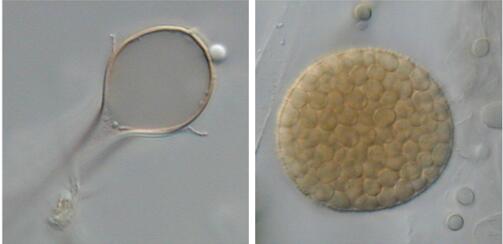Lichtheimia corymbifera
Mucormycosis is an opportunistic fungal infection that occurs in individuals with a compromised immune system. It is caused by fungi of order Mucorales and class Zygomycetes. Lichtheimia genus is also reported to be the most common cause of mucormycosis. This genus contains six thermotolerant species, among which Lichtheimia corymbifera and Lichtheimia ramosa have been reported from human infections. The increasing population at risk and the negative side effects of the existing antifungal agents highlight the need to discover and develop novel, efficient antifungal agents. Creative Biolabs is well-recognized as a leading CRO for antifungal drug discovery and development. Specifically, we offer antifungal drug discovery services against Lichtheimia corymbifera (L. corymbifera).
Introduction to L. corymbifera
L. corymbifera is a saprobic zygomycete fungus found in soil, manure plants, and decayed foods and can be pathogenic in immunocompromised patients. Colonies of L. corymbifera rapidly grow at temperatures between 35-37°C, and are thermotolerant until a maximum of 55°C. The hyphae of the substrate mycelia form characteristic tree-like structures among the growth front and giant cells. As causative opportunistic agents of systemic mycoses in humans, L. corymbifera infections differ significantly between geographic regions. In Europe, Lichtheimia species is the second most common cause of mucormycosis, while Lichtheimia species accounts for 5% of all mucormycosis in the USA. The main route of infection is through the inhalation of asexual spores (sporangiospores). Besides, cutaneous and subcutaneous infections are also common clinical manifestations.
 Fig.1 L. corymbifera apophysis (left) and sporangium (right).
Fig.1 L. corymbifera apophysis (left) and sporangium (right).
Antifungal Drugs against L. corymbifera
Treatment of mucormycosis caused by L. corymbifera often involves a combination of surgical debridement and antifungal therapy. L. corymbifera is susceptible to antifungal drugs Amphotericin B. However, negative side effects including both mild and severe forms can be possible.
Features of our Services
Our profound expertise in antifungal drug discovery and many years of experience in contract research results in a sustainable advantage for our customers. We offer you a sophisticated range of services, covering target identification and validation, Hit identification, Hit to lead, Lead optimization, and IND enabling. Besides, we focus on various potential drug targets that may play a role in the complex pathogenesis of mucormycosis, including cell wall targets, cell membrane targets, biosynthetic pathway, virulence factors, etc. Moreover, our services are characterized by:
- Expert scientists and staff with cross-industry and cross-academia expertise
- Robust, efficient processes combined with quality systems and on-time delivery of reports
- Superior customer service, cutting-edge science, high-quality data, and top scientific talent
Other fungi that are implicated in mucormycosis include:
- Rhizopus Oryzae
- Rhizopus Microsporus
- Lichtheimia Ramosa
- Rhizomucor Pusillus
- Mucor Circinelloides
- Apophysomyces Elegans
- Saksenaea Vasiformis
- Cunninghamella Bertholletiae
Creative Biolabs leverages our profound antifungal drug discovery expertise, extensive hands-on experience, in-depth knowledge of fungal diseases to support the rapidly growing interests in this field. Moreover, we continually update our tools and capabilities to keep up with the pace of changing research demands. Please contact us for more information or a detailed quote.
For Research Use Only.
